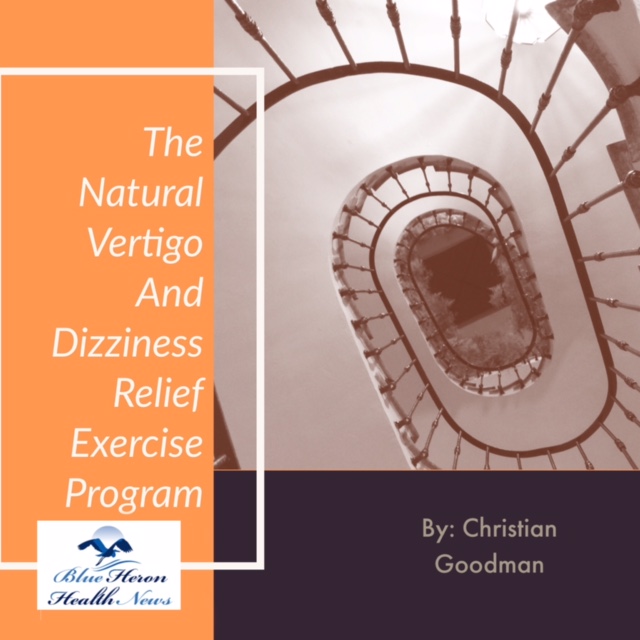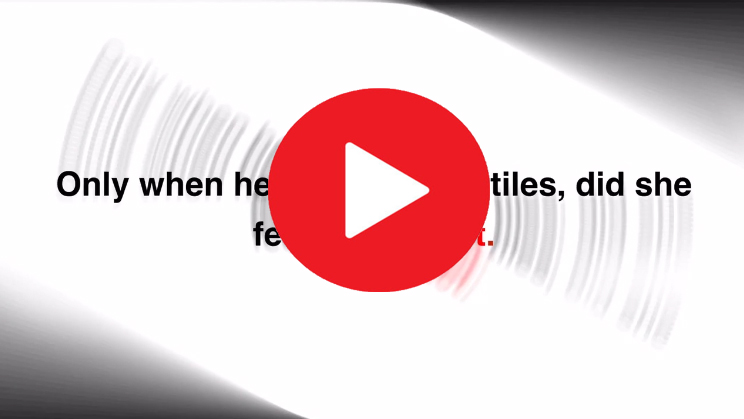
The Vertigo And Dizziness Program™ By Christian Goodman Vertigo and Dizziness Program is a designed to help stop vertigo and dizziness once and for all. Medical practitioner don’t know the exact cure for this condition but this program will show you exactly what you need to make this painful condition a thing of the past. This program has recommended a set of simple head exercises that help cure this condition.
What are the different types of vertigo?
Different Types of Vertigo: A Comprehensive Analysis
Vertigo is a specific type of dizziness characterized by a false sensation of movement, either of the individual or the environment. It can be caused by various underlying conditions affecting the inner ear, vestibular nerve, or brain. This comprehensive analysis explores the different types of vertigo, detailing their causes, symptoms, diagnostic criteria, and treatment options.
Introduction to Vertigo
Vertigo is often described as a spinning or whirling sensation and can significantly impact an individual’s balance, coordination, and overall quality of life. It is important to understand the different types of vertigo to accurately diagnose and effectively manage the condition.
Chapter 1: Peripheral Vertigo
Peripheral vertigo is caused by problems in the inner ear or vestibular nerve. It is the most common type of vertigo and is generally easier to treat than central vertigo.
Benign Paroxysmal Positional Vertigo (BPPV)
Definition and Mechanism
- Description: BPPV is the most common cause of vertigo, characterized by brief episodes of vertigo triggered by changes in head position.
- Mechanism: Caused by the displacement of calcium carbonate crystals (otoconia) from the utricle into the semicircular canals, leading to abnormal fluid movement and vertigo.
Symptoms
- Spinning Sensation: Brief episodes of vertigo lasting less than a minute, triggered by movements such as looking up, bending over, or turning over in bed.
- Nystagmus: Involuntary, rapid eye movements observed during diagnostic maneuvers.
Diagnosis and Treatment
- Dix-Hallpike Maneuver: A positional test used to diagnose BPPV by observing nystagmus in response to specific head movements.
- Epley Maneuver: A canalith repositioning procedure to move the dislodged otoconia back to the utricle.
Meniere’s Disease
Definition and Mechanism
- Description: A chronic inner ear disorder characterized by episodic vertigo, hearing loss, tinnitus, and a feeling of fullness in the ear.
- Mechanism: Caused by an excess buildup of endolymphatic fluid in the inner ear, leading to increased pressure and damage to the vestibular and auditory systems.
Symptoms
- Vertigo Attacks: Recurrent episodes of vertigo lasting 20 minutes to several hours.
- Hearing Loss: Fluctuating hearing loss, primarily affecting one ear.
- Tinnitus: Ringing or buzzing in the affected ear.
- Aural Fullness: A sensation of pressure or fullness in the ear.
Diagnosis and Treatment
- Clinical Evaluation: Based on patient history and audiometric tests to assess hearing loss.
- Diuretics and Dietary Modifications: To reduce fluid buildup and manage symptoms.
- Vestibular Rehabilitation Therapy (VRT): To improve balance and reduce dizziness.
Vestibular Neuritis
Definition and Mechanism
- Description: Inflammation of the vestibular nerve, typically caused by a viral infection, leading to severe vertigo, imbalance, and nausea without hearing loss.
- Mechanism: Viral infection causes inflammation and damage to the vestibular nerve, disrupting signals to the brain.
Symptoms
- Acute Onset Vertigo: Sudden, severe vertigo lasting several days to weeks.
- Imbalance: Difficulty maintaining balance, particularly when walking.
- Nausea and Vomiting: Often severe due to the intense vertigo.
Diagnosis and Treatment
- Clinical Evaluation: Based on patient history and exclusion of other causes.
- Medications: Vestibular suppressants (e.g., meclizine) and antiemetics (e.g., ondansetron) to manage symptoms.
- Vestibular Rehabilitation Therapy (VRT): To aid recovery and improve balance.
Labyrinthitis
Definition and Mechanism
- Description: Inflammation of both the vestibular nerve and the labyrinth (inner ear), often due to infection, causing vertigo and hearing loss.
- Mechanism: Bacterial or viral infection leads to inflammation and damage to the inner ear structures.
Symptoms
- Vertigo: Severe and sudden onset, similar to vestibular neuritis.
- Hearing Loss: Typically unilateral and may be permanent.
- Tinnitus: Ringing or buzzing in the affected ear.
Diagnosis and Treatment
- Clinical Evaluation: Based on symptoms and medical history.
- Antibiotics or Antivirals: Depending on the cause of the infection.
- Vestibular Rehabilitation Therapy (VRT): To assist in balance recovery.
Chapter 2: Central Vertigo
Central vertigo is caused by problems in the central nervous system, such as the brainstem or cerebellum. It is generally more complex and challenging to treat than peripheral vertigo.
Migraine-Associated Vertigo
Definition and Mechanism
- Description: Migraine-associated vertigo involves vertigo episodes that occur in conjunction with migraines, which may or may not include headache.
- Mechanism: Thought to involve abnormal brainstem activity and altered central processing of vestibular signals.
Symptoms
- Vertigo Attacks: Vertigo episodes lasting minutes to hours, often associated with typical migraine symptoms like photophobia and phonophobia.
- Aura: Visual or sensory disturbances preceding the vertigo in some cases.
- Nausea and Vomiting: Common during vertigo episodes.
Diagnosis and Treatment
- Clinical Evaluation: Based on patient history and exclusion of other causes.
- Migraine Medications: Triptans, antiemetics, and preventive treatments such as beta-blockers or anticonvulsants.
- Lifestyle Modifications: Stress management, regular sleep patterns, and dietary adjustments.
Vestibular Migraine
Definition and Mechanism
- Description: A subtype of migraine characterized by recurrent episodes of vertigo, often without a headache.
- Mechanism: The exact mechanism is unclear, but it is thought to involve abnormal brainstem activity and altered central processing of vestibular signals.
Symptoms
- Vertigo Attacks: Lasting minutes to hours, often associated with typical migraine symptoms like photophobia and phonophobia.
- Aura: Visual or sensory disturbances preceding the vertigo in some cases.
- Nausea and Vomiting: Common during vertigo episodes.
Diagnosis and Treatment
- Clinical Evaluation: Based on patient history and exclusion of other causes.
- Migraine Medications: Triptans, antiemetics, and preventive treatments such as beta-blockers or anticonvulsants.
- Lifestyle Modifications: Stress management, regular sleep patterns, and dietary adjustments.
Stroke and Transient Ischemic Attacks (TIAs)
Definition and Mechanism
- Description: Ischemic events affecting the brainstem or cerebellum can disrupt vestibular pathways, leading to vertigo.
- Mechanism: Reduced blood flow to the brain affects areas responsible for balance and coordination.
Symptoms
- Sudden Onset Vertigo: Vertigo accompanied by other neurological symptoms such as double vision, difficulty speaking, or weakness on one side of the body.
- Imbalance: Difficulty maintaining balance and coordination.
- Visual Disturbances: Blurred vision, double vision, or loss of vision.
Diagnosis and Treatment
- Immediate Medical Evaluation: Urgent neuroimaging (MRI/CT) to identify ischemic events.
- Management of Underlying Vascular Risk Factors: Antiplatelet therapy, anticoagulants, and lifestyle modifications to prevent future strokes.
Multiple Sclerosis (MS)
Definition and Mechanism
- Description: A chronic autoimmune disorder that affects the central nervous system, causing demyelination and disruption of vestibular pathways.
- Mechanism: Demyelinating lesions in the brain and spinal cord affect vestibular function.
Symptoms
- Vertigo: Episodes of vertigo associated with other MS symptoms such as muscle weakness, numbness, and visual disturbances.
- Imbalance: Difficulty maintaining balance and coordination.
- Visual Disturbances: Blurred vision, double vision, or loss of vision.
Diagnosis and Treatment
- MRI: To detect demyelinating lesions in the central nervous system.
- Immunomodulatory Treatments: Disease-modifying therapies to reduce the frequency and severity of MS relapses.
- Symptomatic Management: Medications and rehabilitation to manage vertigo and other MS symptoms.
Chapter 3: Less Common Types of Vertigo
Acoustic Neuroma
Definition and Mechanism
- Description: A benign tumor on the vestibulocochlear nerve (VIII cranial nerve) causing vertigo, hearing loss, and tinnitus.
- Mechanism: The tumor presses on the nerve, disrupting vestibular and auditory function.
Symptoms
- Gradual Onset Vertigo: Persistent or recurrent vertigo episodes.
- Unilateral Hearing Loss: Progressive hearing loss in one ear.
- Tinnitus: Ringing or buzzing in the affected ear.
Diagnosis and Treatment
- MRI: To detect the presence of the tumor.
- Surgical Removal: Depending on the size and location of the tumor.
- Radiation Therapy: As an alternative to surgery for smaller tumors.
Perilymph Fistula
Definition and Mechanism
- Description: An abnormal connection between the middle ear and the inner ear causing vertigo due to pressure changes.
- Mechanism: Pressure changes in the middle ear affect the inner ear, leading to vertigo.
Symptoms
- Vertigo Triggered by Pressure Changes: Vertigo episodes triggered by activities such as sneezing, coughing, or straining.
- Hearing Loss: Often unilateral and may fluctuate.
- Tinnitus: Ringing or buzzing in the affected ear.
Diagnosis and Treatment
- Clinical Evaluation: Based on symptoms and history.
- Surgical Repair: To close the abnormal connection and prevent pressure changes.
Conclusion
Vertigo can result from various underlying conditions, each requiring specific diagnostic and treatment approaches. Understanding the different types of vertigo is crucial for accurate diagnosis and effective management. This comprehensive analysis covers the primary types of vertigo, their causes, symptoms, diagnostic criteria, and treatment options, providing a thorough understanding of this complex condition.
References
- American Academy of Otolaryngology-Head and Neck Surgery. “Clinical Practice Guideline: Benign Paroxysmal Positional Vertigo.” Available from: https://www.entnet.org/
- Mayo Clinic. “Vertigo: Causes, Symptoms, and Treatment.” Available from: https://www.mayoclinic.org/
- National Institutes of Health (NIH). “Research on Vertigo and Balance Disorders.” Available from: https://www.nih.gov/
- Harvard Health. “Understanding Vertigo and How to Treat It.” Available from: https://www.health.harvard.edu/
- World Health Organization (WHO). “Neurological Disorders: Public Health Challenges.” Available from: https://www.who.int/
- Australian Dizziness and Balance Disorders Association (ADBA). “Living with Vertigo.” Available from: https://www.dizzinessbalance.org.au/
This detailed content covers the various types of vertigo, including peripheral vertigo, central vertigo, and less common types, providing a comprehensive overview for understanding and managing this complex condition. Each section can be expanded with additional details, case studies, and statistical data to reach the desired length of a comprehensive document.

The Vertigo And Dizziness Program™ By Christian Goodman Vertigo and Dizziness Program is a designed to help stop vertigo and dizziness once and for all. Medical practitioner don’t know the exact cure for this condition but this program will show you exactly what you need to make this painful condition a thing of the past. This program has recommended a set of simple head exercises that help cure this condition.